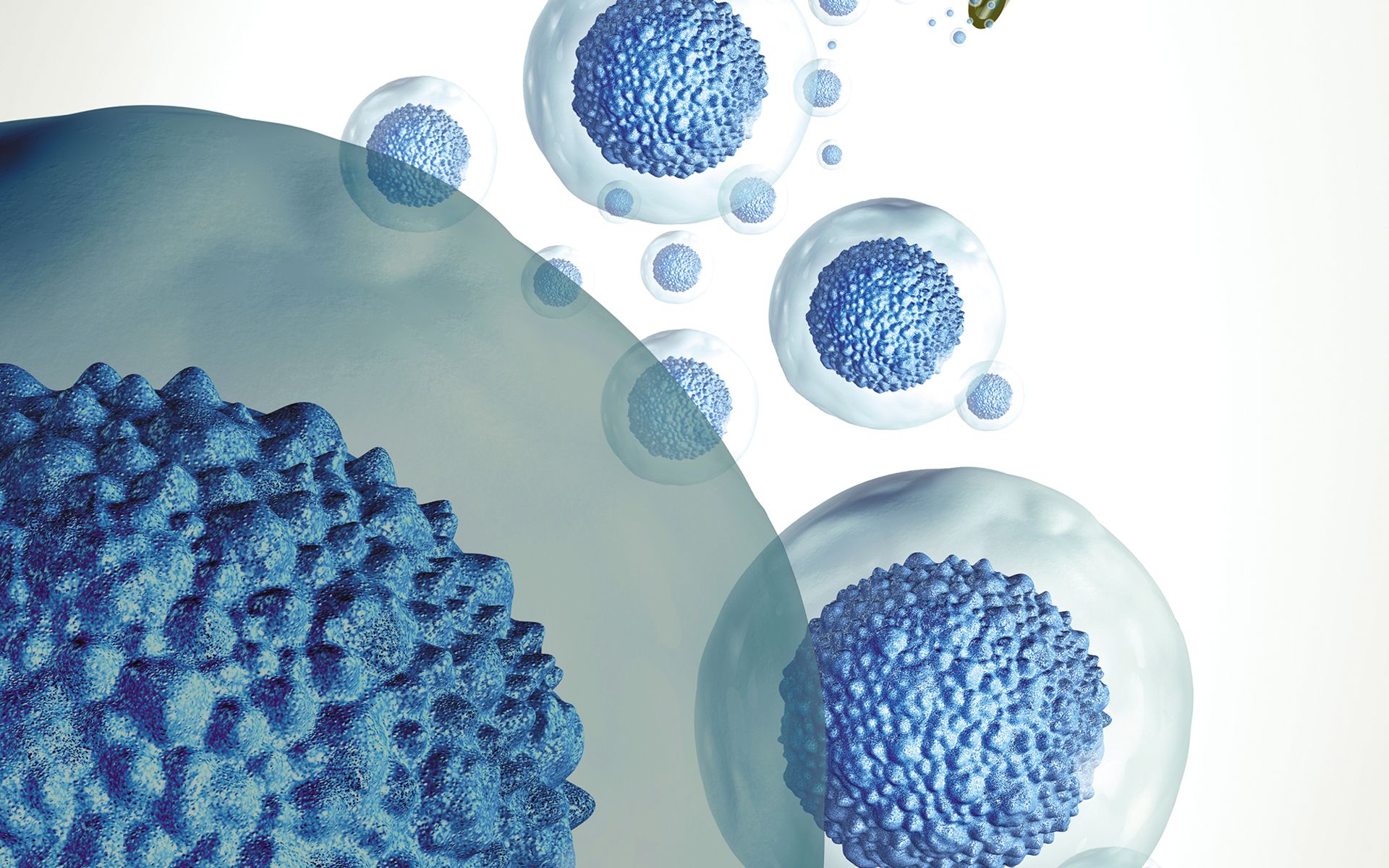Science Square (Issue 146)

In This Article
-
Insulin-secreting pancreatic beta cells generated from stem cells
-
Implantable tiny drug factories show promise in cancer immunotherapies
-
Human-induced climate change may make Mt. Everest's highest glacier disappear by mid-century
Insulin-secreting pancreatic beta cells generated from stem cells
Balboa et al. Functional, metabolic and transcriptional maturation of human pancreatic islets derived from stem cells. Nature Biotechnology, March 2022.
Produced in pancreatic beta cells, insulin is a key hormone with a duty to regulate sugar (glucose) levels in the blood. In response to sugar, beta-cells are activated to secrete insulin as a result of which blood glucose levels go down. When beta-cells are diminished or become dysfunctional, blood glucose levels go up beyond normal levels, leading to diabetes. In patients with type 1 diabetes (T1D), pancreatic beta cells are gradually destroyed by the patient's own immune system. T1D patients can use daily insulin injections, but since it is difficult to precisely regulate glucose levels, repetitive episodes of dysregulated sugar can often lead to organ damage and shorten a patient’s lifespan. Insulin can be also restored by transplanting beta cells from the isolated pancreas of organ donors. However, this treatment has not been feasible or widely used. There have been intense efforts to produce functional beta cells from stem cells for a broad common cell therapy, but these attempts usually ended up with immature beta cells with limited insulin secretion capacity. A recent study demonstrated for the first time that pancreatic cells with a physiologically normal structure and function can be generated from stem cells. Researchers tested their stem cell-derived beta cells in both cell culture and mice studies. In mice, they showed that transplanted stem cell-derived beta cells can take on the duty to robustly manage the glucose metabolism in the context of an organism. Moreover, these cells responded to changes in the glucose level even better than the pancreatic islets isolated from organ donors. The investigation of beta cell function in this study is the most comprehensive in the field so far. The generation of fully functionally mature beta cells at a scalable level may be possible in the next few years and will make diabetes cell therapies more attainable.

Implantable tiny drug factories show promise in cancer immunotherapies
Nash et al. Clinically translatable cytokine delivery platform for eradication of intraperitoneal tumors. Science Advances, March 2022.
Immunotherapy, which uses the body's own immune system to prevent, control, and eradicate cancer has been increasingly adopted due to its precision. A new study showed that tiny, implantable “drug factories" that produce an immune system protein could offer a new way to treat some cancers. In the new experimental therapy, tested only in mice, pinhead-sized beads are inserted in the vicinity of cancerous growths, and they deliver a continuous dose of interleukin-2 (IL-2) to keep white blood cells activated to detect and fight cancer. IL-2 is an immunotherapy medicine used in treating multiple cancer types. However, IL-2, especially at the systemic high doses, can be extremely toxic with serious side effects including low blood pressure, an abnormal heart rate, and chest pain. With this in mind, the new study specifically fabricated tiny IL-2 beads that are designed to target local tumor microenvironments without affecting the rest of the body. Initial results on mice with advanced-stage ovarian cancer showed 100% effectiveness. In addition, mice with bowel cancer showed 87% success only in 6 days. This technology holds a special premise for cancers that occur in closed-off cavities such as ovarian, pancreatic, and colon cancers, as well as certain lung tumors. Furthermore, these tiny drug factories can be loaded with any other drug depending on the tumor and tissue type. Overall, these results provide a strong rationale for designing human trials that are expected to start next year.

Human-induced climate change may make Mt. Everest's highest glacier disappear by mid-century
Potocki et al. Mt. Everest’s highest glacier is a sentinel for accelerating ice loss. Nature Climate and Atmospheric Science. February 2022.
Mountain glaciers has been melting at increasing rates for several decades, and the resulting loss of water capacity has substantially impacted both local and global ecosystems. A recent study focused on the highest mountain on Earth, Mt. Everest (8848.86 m). The study is based on reviews of past literature, recently acquired data and modeling, changes in temperature, precipitation, glaciers and glacial lakes, water quality of rivers and lakes, atmospheric environment, and vegetation phenology. Their analyses revealed substantial warming in the Mt. Everest region during the 20th century, which caused melting and sublimation. This has caused a chain of events where the more snow cover melts, the more ice is exposed which absorbs more sunshine and in turn accelerates the glacier’s melting rate. The South Col Glacier, located near Mt. Everest’s summit, has lost around 55m of thickness in the last 25 years. Alarmingly, it is now thinning over 80 times faster than the 2,000 years it took to form the ice. While changes in wind and humidity may have slightly contributed to this ice loss, human-induced climate change is the overwhelming cause. Mt. Everest shows its hydrological response to global warming. If the same melting trends continue, then the glacier-stored water that more than 1 billion people depend on for drinking water and irrigation could start to significantly deplete. With an estimated thinning rate around 2 meters per year, glaciers including the South Col may disappear by mid-century.









